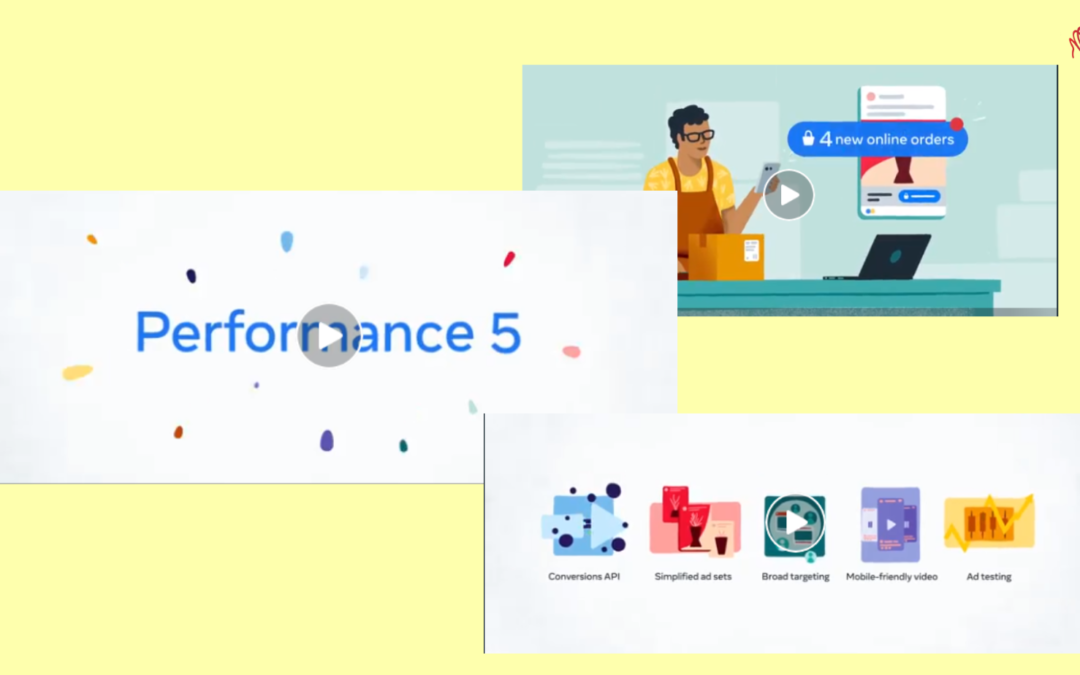Meta Shares some Fresh Advice to enhance Ad Performance
Recently, Meta unveiled its new Ad “Performance 5″ framework, a collection of five data-supported strategies that can help to enhance the performance of advertising on Meta platforms.
Meta suggests that:
Your ad campaigns can perform better, spend less per action, and connect with more prospective buyers by implementing these five adjustments.

API Conversions
This will create a direct link between Meta advertisements and online events, such as on-website purchase activities, by implementing Meta’s Conversions API.
“Advertisers with the Meta pixel who set up the Conversions API saw a 13% CPA improvement on average.”
Here’s how you can make the most of Conversions API. It can assist you with the following:
1. Improve Event Match Quality Rating
2. Improve your Rating
3. View your Rating
4. Share the same Events
That is also unaffected by Apple’s ATT modifications because this directly links your CRM data to the Meta advertising platform, allowing for enhanced data flows despite increased restrictions.
Simplified Ad Sets
According to Meta, combining advertising, ad packages, and campaigns will increase effectiveness and cut costs.
Meta’s delivery system works more effectively and uncovers additional chances for an advertiser’s budget by leveraging similar creative within ad sets.
“Women’s accessories brand Lele Sadoughi saw an increase in conversions when testing a simplified ad account structure.”
So basically, you can improve the effectiveness of your ads by making it simpler for Meta’s automated systems to identify the appropriate audience.
The company has also given steps on how businesses can get started with this:
1. Start by checking for audience overlap
2. Choose the ad sets you want to combine
3. Consolidate audience and budget
4. Add your creative assets
5. Turn off other competing ad sets
Broad Targeting
Broad targeting currently yields greater results for Facebook and Instagram advertisements than more specialized, more limited audience methods, according to several performance advertisers.
“Small business advertisers using the conversions objective saw an average 12% decrease in cost per action (CPA) when using broad targeting (location, age, or gender) compared to non-broad targeting.”
Although the platform has traditionally benefited from its highly targeted advertising, wide targeting is now frequently preferable as automated targeting has improved, and data limits have reduced the efficacy of some audience segments.
Mobile Friendly Video
Advertisers who utilize mobile-first creative (vertical videos kept to 15 seconds or less and use of mobile-first creative) spend less on their campaigns than those who do not.
Advertisers should take into account the current trend of short-form videos in their strategy.
Ad Testing
A/B testing, focused on creativity, targeting, or ad set structure, is Meta’s final major suggestion.
This will provide you with additional context to help you make wiser decisions about your campaigns.
“Winning A/B tests decreased cost per result (CPR) by over 30% on average (compared to losing ads).”
Combining these ad strategies can significantly improve the efficacy of your Facebook and Instagram ads, therefore it’s important to pay attention to Meta’s suggestions based on its experience with its various apps.
To understand more, check out the new Performance 5 hub, which provides a variety of examples to highlight these crucial ideas.


Recent Comments